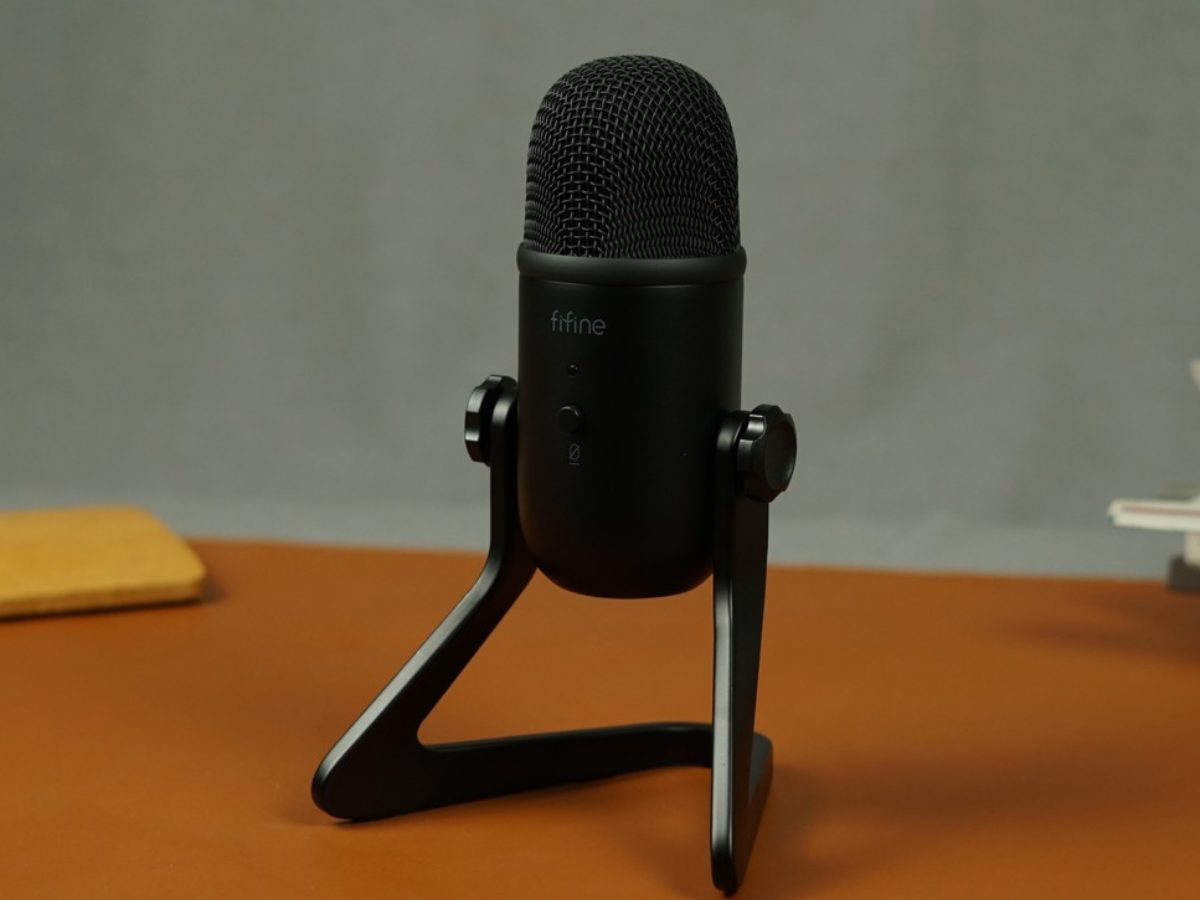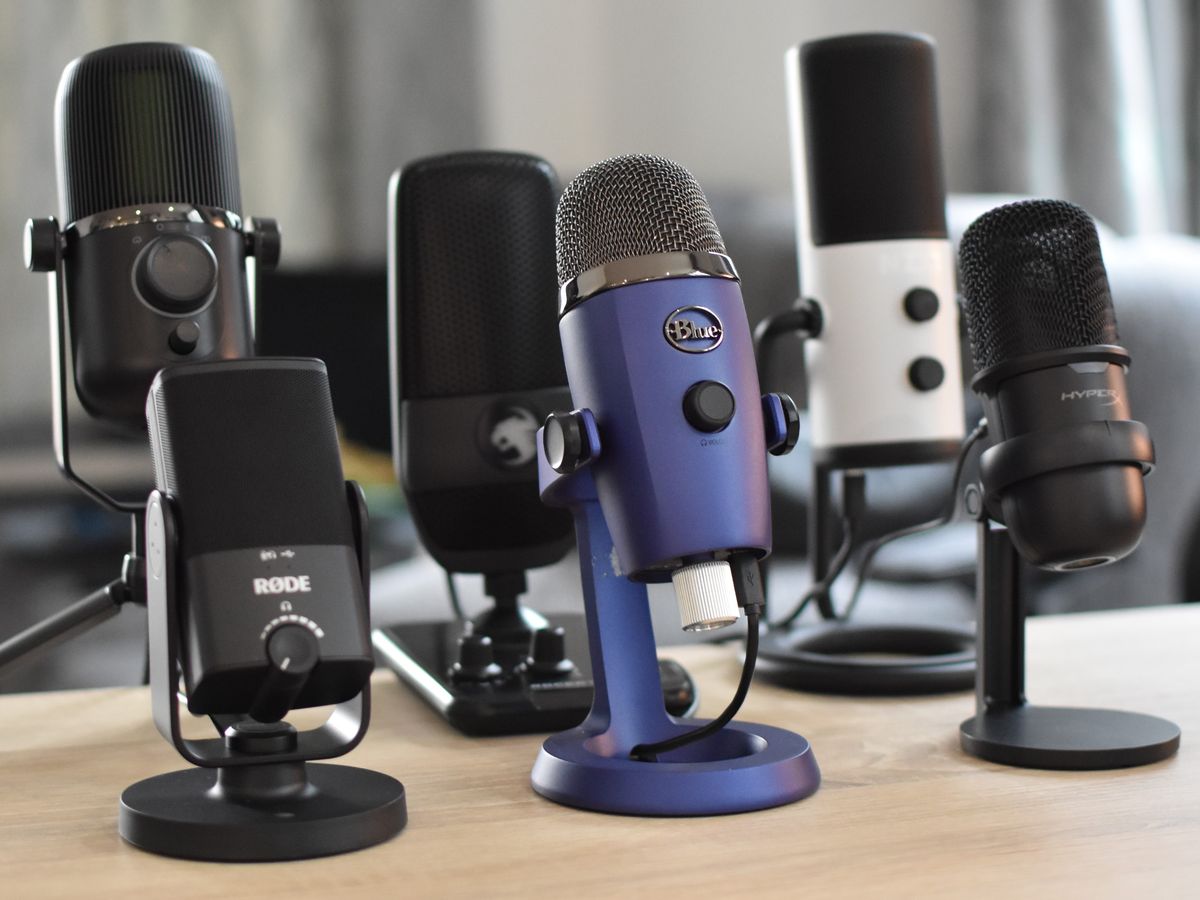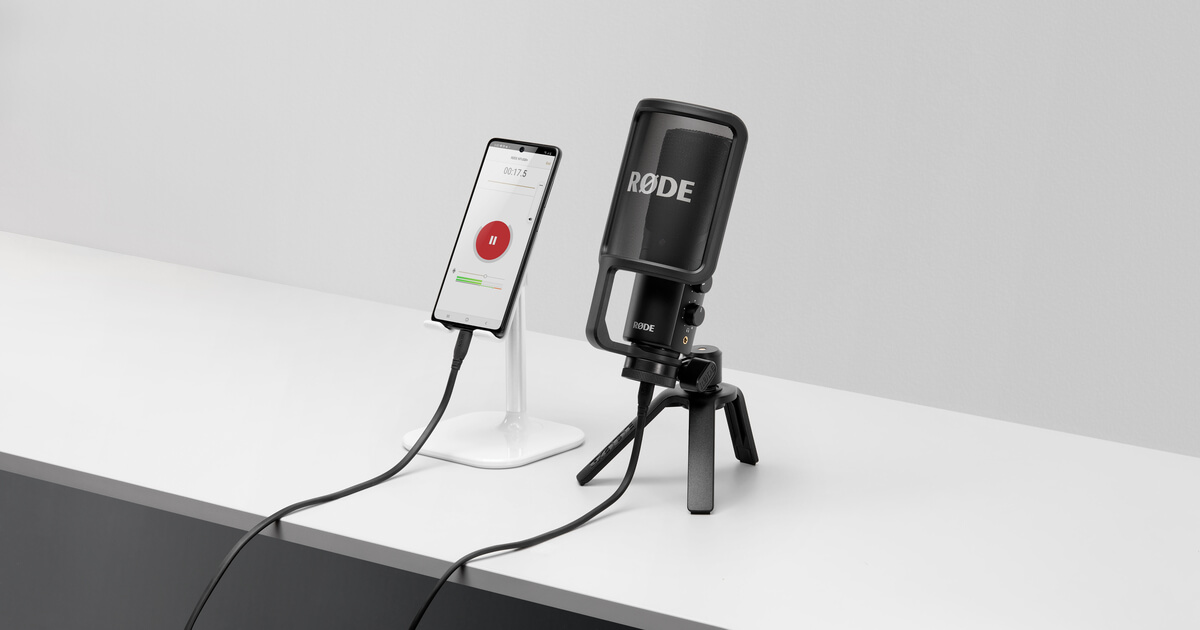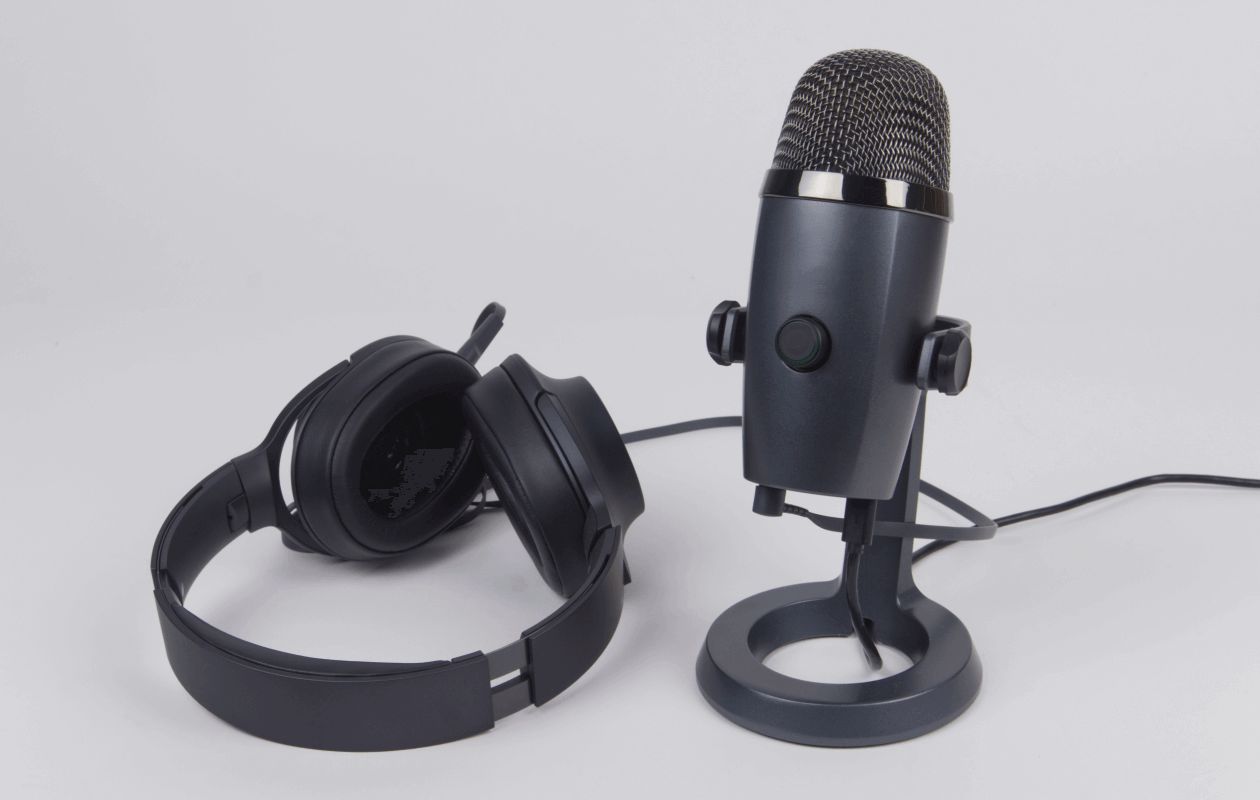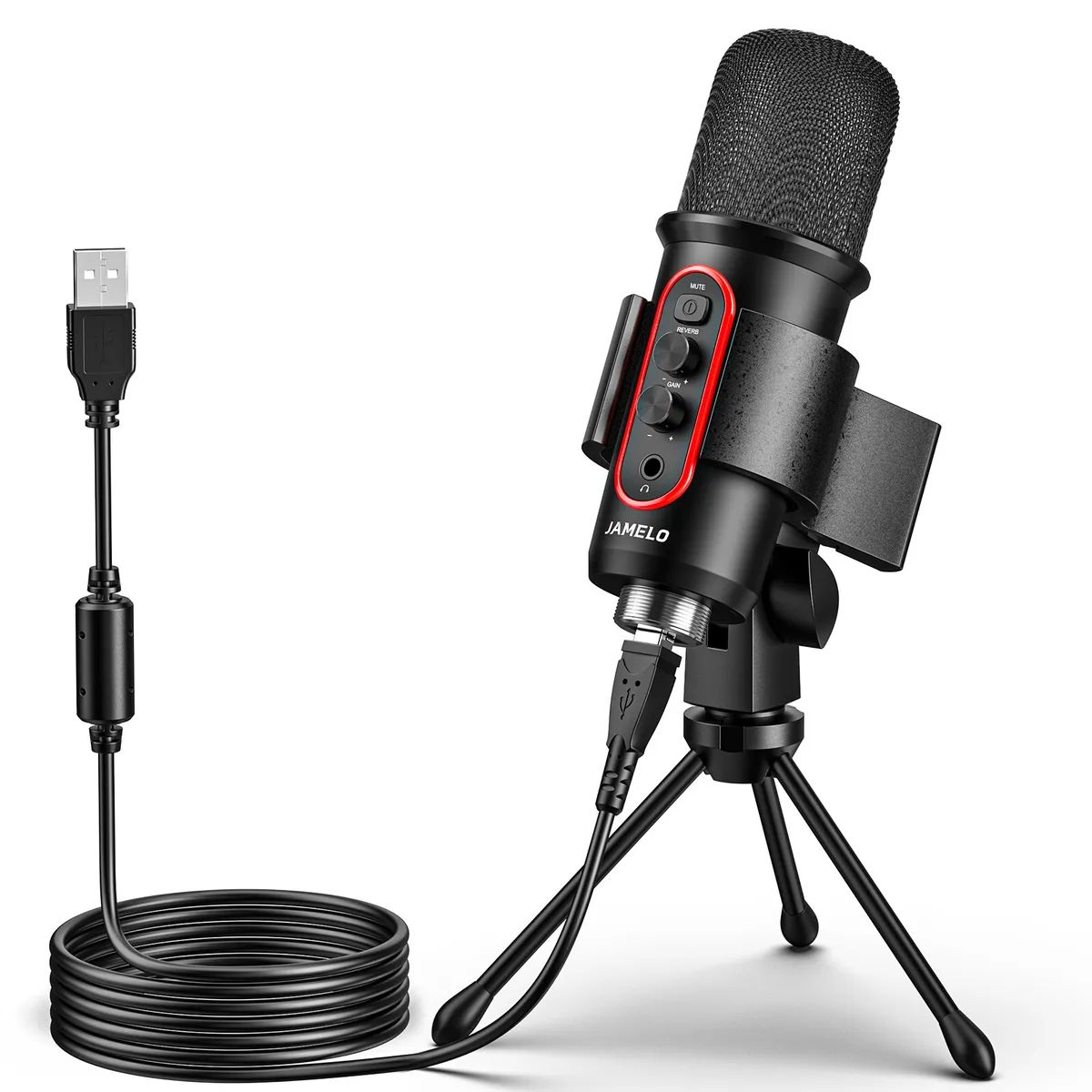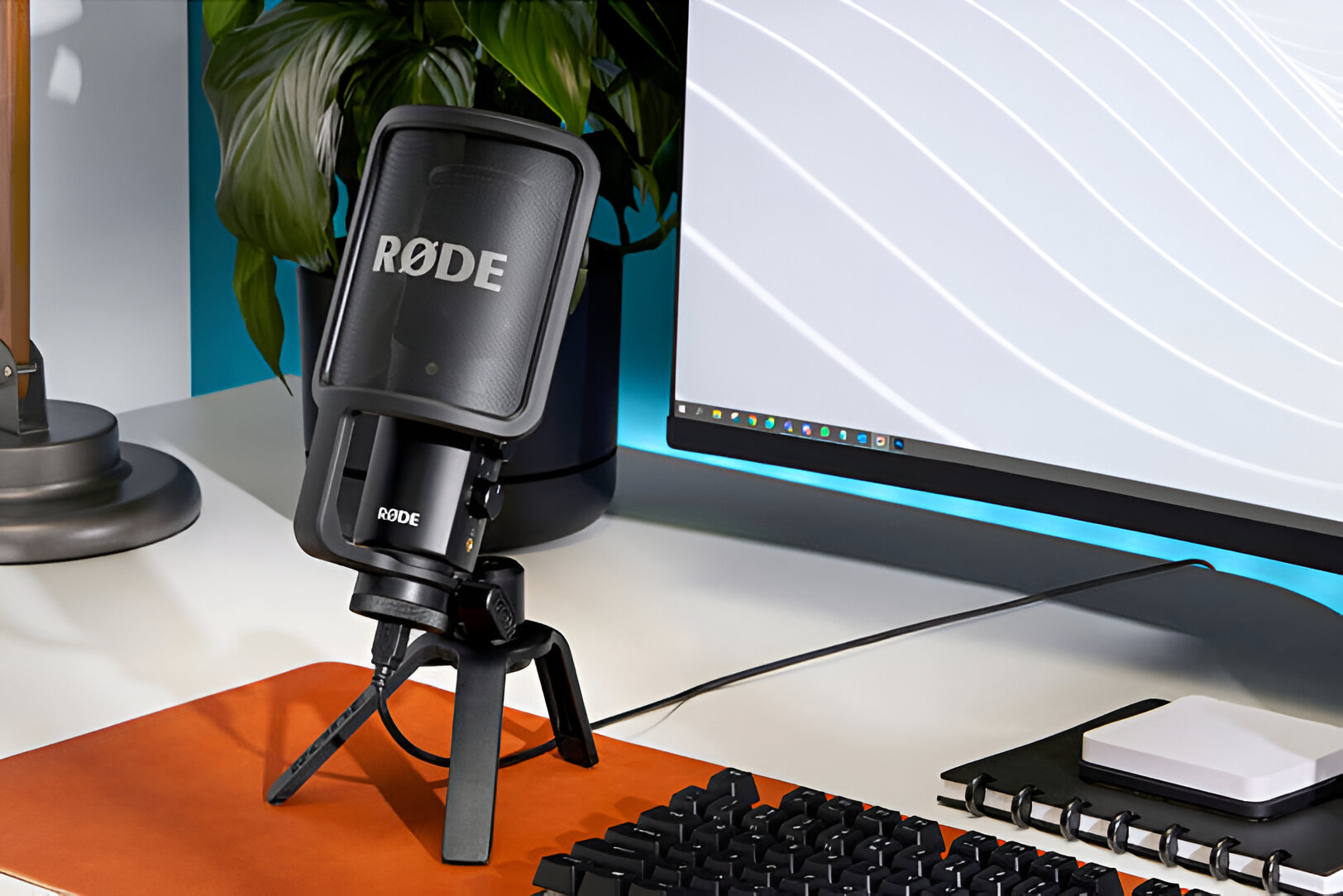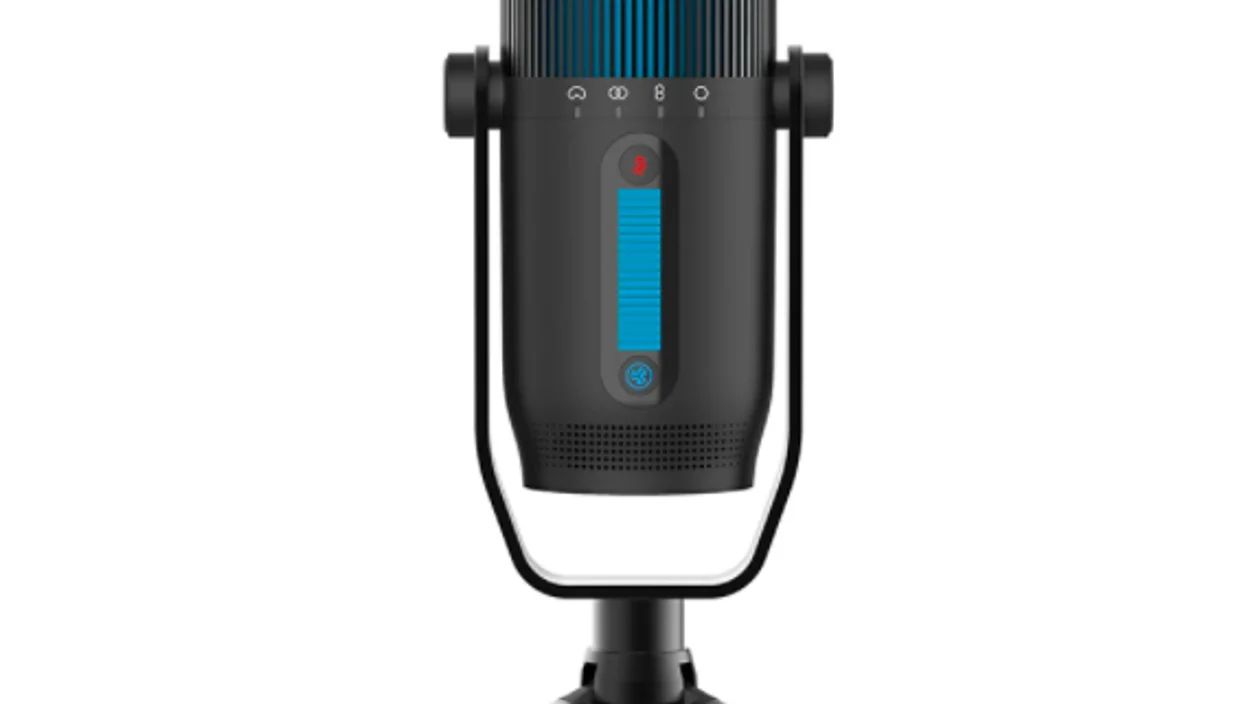Introduction
Welcome to the world of USB microphones! In today’s digital age, where content creation and online communication are increasingly important, having a high-quality microphone is essential. With the rise of remote work, podcasting, streaming, and video conferencing, the need for a reliable and user-friendly microphone has become paramount.
A USB microphone is a type of microphone that directly connects to your computer or device via a USB port. It offers a convenient plug-and-play solution, allowing you to quickly and easily record audio or communicate with others without the need for additional equipment or complex setups.
USB microphones are widely used by professionals, content creators, gamers, and even casual users who want to improve the audio quality of their recordings or online communications. They are highly versatile and can be utilized for a variety of purposes, including podcasting, voice overs, video conferencing, live streaming, gaming commentary, musical recordings, and more.
In this article, we will explore the world of USB microphones, discussing their functionality, advantages, different types, and how to choose the right one for your needs. We will also provide tips for setting up your USB microphone and getting the best audio quality possible. Additionally, we will compare USB microphones to XLR microphones, helping you determine which option is best suited to your requirements.
So, whether you are a seasoned content creator or a beginner exploring the world of audio recording, join us as we dive into the wonderful world of USB microphones and discover the possibilities they offer for elevating your sound.
What is a USB Microphone?
A USB microphone is a type of microphone that connects directly to your computer or device via a USB port. Unlike traditional microphones that require additional audio interfaces or mixers, USB microphones provide a convenient plug-and-play solution. They are designed to be user-friendly, allowing anyone to easily record professional-quality audio or engage in clear communication.
USB microphones are known for their simplicity and versatility. They are compatible with various operating systems, including Windows, Mac, and Linux, making them accessible to a wide range of users. Whether you are a content creator, podcaster, journalist, gamer, or simply someone who wants to improve the audio quality of your online communications, a USB microphone can be a valuable tool.
One of the key advantages of USB microphones is their ease of use. They eliminate the need for additional hardware or complex setups. USB microphones are typically plug-and-play devices, which means you can connect them to your computer and start recording or using them for communication instantly.
USB microphones come in different shapes and sizes, ranging from compact and portable options to larger, studio-grade models. They offer various features and functionalities, such as built-in headphone jacks, volume controls, mute buttons, and adjustable microphone stands. Some USB microphones even have additional features like gain control, pattern selection, and direct monitoring, allowing for greater control and customization.
These microphones use digital conversion technology to convert analog audio signals into digital data, which can be easily processed by your computer or device. The built-in analog-to-digital converter (ADC) ensures that the audio signals are accurately captured and transmitted, resulting in high-quality sound reproduction.
USB microphones are ideal for a wide range of applications. They can be used for recording vocals, instruments, podcasts, voice-overs, interviews, conference calls, live streaming, gaming commentary, and more. With their convenience and versatility, USB microphones have become an essential tool for many professionals and enthusiasts in various industries.
To sum it up, a USB microphone is a convenient and user-friendly device that allows you to capture professional-quality audio directly on your computer or device. It eliminates the need for complex setups and additional equipment, making it an accessible option for anyone looking to improve their audio recording or online communication. With the advancements in technology, USB microphones have become a popular choice for content creators, podcasters, gamers, and professionals who require high-quality, hassle-free audio solutions.
How does a USB Microphone work?
USB microphones work by utilizing the Universal Serial Bus (USB) interface to connect directly to your computer or device. They incorporate analog-to-digital conversion technology and built-in circuitry to capture audio signals and transmit them digitally.
When you connect a USB microphone to your computer, it is recognized as an external audio device. The USB connection provides both power and data transfer capabilities, eliminating the need for separate power sources or audio interfaces. This plug-and-play functionality makes USB microphones incredibly convenient and easy to use.
The heart of a USB microphone is its built-in analog-to-digital converter (ADC). The ADC converts the analog audio signals produced by the microphone’s diaphragm or capsule into digital data that your computer can process. This conversion process involves sampling the analog signal at regular intervals and quantizing the amplitude of each sample.
Once the analog audio signals are converted into digital data, they can be transmitted to your computer via the USB connection. The digital data is then processed in real-time by the computer’s audio software or application, allowing you to monitor, record, or communicate using the USB microphone.
USB microphones often feature a headphone jack and built-in headphone amplification. This allows you to monitor your audio in real-time, ensuring that you have a clear understanding of how you sound while recording or communicating. Some USB microphones also offer adjustable volume controls, mute buttons, and other convenient features for optimizing the audio experience.
USB microphones come in different types and designs, including condenser microphones, dynamic microphones, and ribbon microphones. Condenser microphones are popular for their sensitivity and high-quality sound reproduction, while dynamic microphones are known for their durability and ability to handle high sound pressure levels. Ribbon microphones are prized for their warm and vintage sound characteristics.
In recent years, USB microphones have advanced significantly in terms of audio quality and features. Many USB microphones now offer multiple polar patterns, allowing you to switch between cardioid, omnidirectional, and figure-eight patterns. This flexibility enables you to adjust the microphone’s pickup pattern according to your specific recording or communication needs.
Overall, USB microphones provide a simple and efficient solution for capturing professional-quality audio. Their integration of analog-to-digital conversion technology and USB connectivity streamlines the recording and communication process, making them popular among content creators, podcasters, streamers, and professionals seeking high-quality audio with minimal setup requirements.
Advantages of using a USB Microphone
Using a USB microphone offers several advantages, making it a popular choice for many users who require high-quality audio recording or communication capabilities. Here are some key benefits of using a USB microphone:
- Easy setup: One of the main advantages of USB microphones is their simplicity in terms of setup. Unlike traditional microphones that may require additional audio interfaces or mixers, USB microphones offer a plug-and-play solution. You can simply connect the USB microphone to your computer or device, and it is ready to use. This eliminates the need for complex setups and makes USB microphones accessible even to beginners.
- Convenience: USB microphones are incredibly convenient to use. They are compatible with various operating systems, such as Windows, Mac, and Linux, making them suitable for a wide range of users. Whether you are a content creator, podcaster, gamer, or simply someone who wants to improve the audio quality of your online communications, a USB microphone provides a hassle-free solution.
- Portability: Many USB microphones are designed to be compact and portable, allowing you to easily carry them wherever you go. Whether you’re recording on the go or need a microphone for remote work or travel purposes, USB microphones offer the flexibility and convenience of being able to take your recording setup with you.
- High-quality sound: USB microphones have come a long way in terms of audio quality. They are capable of capturing professional-grade sound with clarity and precision. With advancements in digital conversion technology, USB microphones offer high-resolution audio that rivals traditional studio setups. Whether you’re recording vocals, instruments, podcasts, or participating in video conferences, a USB microphone can deliver clear and crisp sound.
- Versatility: USB microphones are highly versatile and can be used for a wide range of applications. Whether you’re recording vocals, instruments, podcasts, voice-overs, interviews, or participating in conference calls or live streaming, USB microphones offer the flexibility to adapt to different recording scenarios. Some USB microphones even offer adjustable polar patterns, allowing you to customize the microphone’s pickup pattern according to your specific needs.
- Affordability: USB microphones are often more affordable compared to traditional microphones. They eliminate the need for additional audio interfaces or mixers, which can lower overall costs. USB microphones provide an accessible entry point for individuals and beginners looking to improve their audio quality without breaking the bank.
These advantages make USB microphones a popular choice among content creators, podcasters, streamers, gamers, and professionals who require high-quality, user-friendly audio solutions. With their easy setup, convenience, portability, and versatility, USB microphones offer a hassle-free way to elevate your sound and enhance your recording or communication experience.
Different types of USB Microphones
USB microphones come in various types and designs, each offering unique features and functionalities to cater to different recording and communication needs. Here are some of the common types of USB microphones:
- Condenser Microphones: Condenser microphones are widely used for their sensitivity and high-quality sound reproduction. They are ideal for capturing vocals, acoustic instruments, and detailed audio recordings. Condenser USB microphones often feature a large diaphragm and offer adjustable polar patterns, such as cardioid, omnidirectional, and figure-eight patterns, providing flexibility for different recording scenarios.
- Dynamic Microphones: Dynamic USB microphones are known for their durability and ability to handle high sound pressure levels. They are often used in live performances and broadcasting settings. Dynamic microphones are less sensitive compared to condenser microphones but offer excellent sound quality and reliability. They are suitable for recording vocals, amplifiers, drums, and other high-volume sound sources.
- Ribbon Microphones: Ribbon microphones are prized for their warm and vintage sound characteristics. They use a thin metal ribbon suspended between a magnetic field to capture sound. Ribbon USB microphones are highly sensitive and offer a smooth and detailed sound reproduction, making them ideal for recording vocals, string instruments, and broadcast applications.
- Lavalier Microphones: Lavalier or lapel microphones are small, clip-on microphones that are commonly used in broadcasting, presentations, and interviews. USB lavalier microphones are compact and unobtrusive, allowing for hands-free recording or communication. They are often omnidirectional, capturing sound from all directions, making them suitable for capturing multiple participants or ambient audio.
- Shotgun Microphones: Shotgun microphones are highly directional microphones with a narrow pickup pattern, ideal for capturing audio from a specific direction while minimizing surrounding noise. USB shotgun microphones are commonly used in video production, filmmaking, and on-location recordings. They are suitable for capturing dialogue, outdoor sound effects, and other focused audio sources.
- Desktop Microphones: Desktop USB microphones are designed to sit on your desk or tabletop. They are often equipped with a stable base and an adjustable microphone stand. Desktop microphones are versatile and suitable for various applications, including podcasting, gaming, voice-over work, and video conferencing.
Each type of USB microphone has its own advantages and considerations depending on your specific recording or communication needs. It’s important to consider factors such as the intended application, desired sound quality, portability requirements, and budget when deciding on the type of USB microphone that best suits you.
With the wide range of options available, you can choose a USB microphone that perfectly matches your requirements and enhances your audio recording or communication experience.
How to choose the right USB Microphone for your needs
Choosing the right USB microphone is crucial to ensure that you get the best audio quality and performance for your specific recording or communication needs. Here are some factors to consider when selecting a USB microphone:
- Intended Use: Determine how you plan to use the USB microphone. Are you recording vocals, instruments, podcasts, or conducting video conferences? Different applications may require different microphone types, such as condenser microphones for vocals or dynamic microphones for live performances. Identify your specific use case to narrow down your options.
- Sound Quality: Consider the desired sound quality. If you’re looking for professional-grade audio recordings, a USB condenser microphone can offer high sensitivity and accurate sound reproduction. However, if you need a microphone for casual communication or gaming, a dynamic microphone may be sufficient.
- Polar Patterns: Understand the different polar patterns available in USB microphones. Cardioid patterns focus on capturing sound from the front while minimizing background noise. Omnidirectional patterns capture sound from all directions and are suitable for recording multiple participants or ambient sound. Figure-eight patterns capture sound from the front and back, useful for recording duets or interviews. Choose a microphone with the appropriate polar pattern for your recording environment and requirements.
- Connectivity and Compatibility: Ensure that the USB microphone you choose is compatible with your computer or device. Check if it is compatible with your operating system, such as Windows, Mac, or Linux. Verify the USB version (USB 2.0 or USB 3.0) and ensure that your computer has a corresponding USB port.
- Additional Features: Consider the additional features that a USB microphone offers. Some microphones have built-in headphone jacks for real-time monitoring, volume controls, mute buttons, and adjustable microphone stands. Determine which features are essential for your recording or communication workflow and prioritize them when selecting a USB microphone.
- Portability: If you require a USB microphone for on-the-go recording or remote work, consider the portability factor. Look for compact and lightweight options that are easy to carry and set up. Portable USB microphones often come with travel cases or protective covers to ensure their safety during transit.
- Budget: Determine your budget for the USB microphone. USB microphones are available at various price points, ranging from entry-level options to professional-grade models. Set a budget that aligns with your requirements and consider options that provide the best value for your investment.
It can also be helpful to read reviews and listen to audio samples of different USB microphones to get an idea of their performance and sound quality. Additionally, consider consulting with professionals or experts in the field who can provide personalized recommendations based on your specific needs.
By carefully assessing your requirements and considering these factors, you can make an informed decision and choose the right USB microphone that meets your recording or communication needs, ensuring optimal audio quality and performance.
Setting up a USB Microphone
Setting up a USB microphone is a straightforward process that allows you to start recording or communicating with high-quality audio. Here are the steps to set up your USB microphone:
- Choose the right location: Find an optimal location for your USB microphone. Consider factors such as ambient noise, room acoustics, and proximity to the sound source. Select a quiet and well-ventilated area to minimize unwanted background noise and ensure optimal sound quality.
- Connect the USB microphone: Plug one end of the USB cable into the USB port on your computer or device. Then, connect the other end of the USB cable to the USB port on your microphone. Make sure the connection is secure to avoid any audio interruptions during recording or communication.
- Set up the microphone stand: Adjust the microphone stand to a suitable height and angle. Ensure that the microphone is positioned correctly and is at an appropriate distance from your sound source. This can vary depending on the type of microphone and the desired sound capture. Experiment with different positions to find the optimal setup for your recording or communication needs.
- Configure audio settings: On your computer or device, open the sound settings or audio control panel. Select the USB microphone as the default audio input device. Adjust the input levels or gain settings to achieve the desired volume level without distorting the audio. You can also enable any additional features that the USB microphone offers, such as headphone monitoring or polar pattern selection.
- Test the microphone: Open an audio recording software or communication application on your computer. Speak or make noise into the microphone and observe the input levels on the software. Ensure that the microphone is correctly picking up sound and that the audio levels are within an appropriate range. If necessary, fine-tune the input levels or gain settings.
- Monitor the audio: If your USB microphone has a built-in headphone jack, plug in your headphones and monitor the audio in real-time. This allows you to hear exactly what the microphone is capturing, ensuring that you have a clear understanding of how you sound during recording or communication. Adjust the headphone volume accordingly to find a comfortable listening level.
- Experiment and refine: Once your USB microphone is set up, take the time to experiment with different microphone techniques, positions, and recording environments. Making small adjustments can have a significant impact on the quality and character of the recorded audio. Explore the features and capabilities of your USB microphone to discover the best settings and configurations for your specific needs.
Remember to keep your USB microphone clean and protected when not in use. Store it in a safe place and avoid exposing it to extreme temperatures or humidity. Regularly check for any software updates or firmware upgrades provided by the microphone manufacturer to ensure optimal performance.
With proper setup and configuration, your USB microphone is ready to deliver high-quality audio for your recording or communication endeavors.
Tips for getting the best audio quality with a USB Microphone
To ensure the best audio quality with your USB microphone, there are several tips and techniques you can follow. Here are some key tips to help you maximize the sound quality:
- Use a pop filter or windscreen: Placing a pop filter or windscreen in front of your USB microphone can help reduce plosive sounds (such as “p” or “b” sounds) and minimize wind noise. These accessories act as a barrier between your mouth and the microphone, resulting in cleaner and clearer recordings.
- Optimize microphone placement: Experiment with the positioning of your USB microphone to find the optimal placement. Positioning the microphone closer to your sound source can help capture a stronger and more focused sound. However, be careful not to position it too close, as it may lead to distorted or boomy recordings.
- Consider room acoustics: Pay attention to the acoustics of your recording space. Rooms with hard surfaces may introduce echoes or reverberations into your recordings. Adding acoustic treatment, such as foam panels or bass traps, can help minimize reflections and create a more controlled recording environment.
- Avoid background noise: Try to record in a quiet environment to minimize background noise. Turn off any noisy appliances, close windows to reduce outside noise, and ensure that the microphone is not too close to computer fans or other sources of unwanted noise. Using headphones or earbuds can also help you monitor and identify any background noise that may be present.
- Adjust input levels: Properly adjusting the input levels or gain settings of your USB microphone is crucial for achieving balanced and distortion-free audio. Avoid setting the levels too low, as it will result in a weak and noisy signal. On the other hand, setting the levels too high can lead to distortion. Aim for a level that captures your sound source clearly without clipping.
- Practice good microphone technique: Develop good microphone technique to optimize your audio quality. Maintain a consistent distance from the microphone, avoid excessive movements or tapping on the microphone, and speak or sing directly into the microphone’s capsule. This will help ensure consistent and clear sound capture.
- Monitor your audio: Use headphones to monitor your audio in real-time. This allows you to detect any issues or unwanted noise during the recording process. Monitoring your audio ensures that you can make adjustments on the fly and achieve the best possible sound quality.
- Edit and post-process your recordings: After recording, take the time to edit and post-process your audio files. Use audio editing software to remove any unwanted background noise, equalize the sound if needed, and apply compression or other enhancements to improve the overall audio quality.
- Keep your USB microphone in good condition: Regularly clean your USB microphone to keep it free from dust, debris, and any buildup that can affect the sound quality. Use a soft cloth or a specialized microphone cleaning kit to gently wipe the microphone’s exterior surfaces. Avoid using abrasive materials or harsh cleaning solutions that can damage the microphone’s housing.
By following these tips and techniques, you can optimize the sound quality of your USB microphone and achieve professional-grade recordings or clear and crisp communication. Remember to experiment with different settings, techniques, and recording environments to find what works best for your specific needs.
USB Microphone vs. XLR Microphone: Which one is right for you?
Choosing between a USB microphone and an XLR microphone depends on your specific needs and preferences. Both options have their advantages and considerations. Let’s explore the characteristics of each to help you determine which one is right for you:
USB Microphones:
- Ease of use: USB microphones offer a simple plug-and-play solution. They can be easily connected to your computer or device without the need for additional audio interfaces or mixers.
- Portability: USB microphones are often compact and lightweight, making them a portable option. They are suitable for on-the-go recording or remote work.
- Convenience: USB microphones are user-friendly and ideal for beginners or those who require a quick and easy setup without complex configurations.
- Affordability: USB microphones are generally more affordable compared to XLR microphones. They provide a budget-friendly entry point for improving audio quality.
- Versatility: USB microphones come in various types and designs, offering versatility for different recording or communication applications.
XLR Microphones:
- Audio quality: XLR microphones are known for their high-quality sound reproduction. They often provide better sensitivity, wider frequency response, and lower self-noise compared to USB microphones.
- Flexibility: XLR microphones offer more flexibility in terms of customization and connectivity. They can be connected to a wide range of audio interfaces or mixers, allowing for precise control over audio settings.
- Professional applications: XLR microphones are commonly used in professional recording studios, live performances, and broadcasting settings where superior sound quality and versatility are crucial.
- Modularity: XLR microphones offer the option to upgrade or interchange different components, such as microphone capsules, cables, and audio interfaces, giving you more control over your recording setup.
- Longer cable runs: XLR cables have the advantage of carrying balanced audio signals over longer distances without signal degradation, making them suitable for large recording spaces or stage setups.
In summary, if you are a beginner, require simplicity, or have a limited budget, a USB microphone may be the right choice for you. USB microphones offer convenience, portability, and versatility for various recording or communication needs.
On the other hand, if you prioritize exceptional sound quality, need customization options, or work in professional audio settings, an XLR microphone may be the better option. XLR microphones provide flexibility, modularity, and are often the go-to choice for pro-grade recording and broadcasting.
Ultimately, the choice between a USB microphone and an XLR microphone depends on your specific requirements, budget, and long-term goals. Consider factors such as audio quality, ease of use, flexibility, and intended applications to make an informed decision that aligns with your needs and preferences.
Conclusion
USB microphones have revolutionized the world of audio recording and communication, providing a convenient and user-friendly solution for capturing high-quality sound. Whether you are a content creator, podcaster, gamer, or professional, USB microphones offer numerous advantages that make them a popular choice in today’s digital age.
In this article, we explored the definition and functionality of USB microphones. We discussed how they work, their advantages, different types available, and how to choose the right one for your specific needs. We also provided tips for setting up your USB microphone and optimizing the audio quality, as well as compared USB microphones to XLR microphones to help you make an informed decision.
USB microphones offer simplicity, convenience, and versatility. They eliminate the need for additional equipment or complex setups, making them accessible to beginners and those who require quick and hassle-free recording or communication solutions. With advancements in technology, USB microphones now provide exceptional sound quality and a range of features that cater to various applications and preferences.
However, it’s important to consider your specific requirements and goals when choosing a USB microphone. Factors such as intended use, sound quality, polar patterns, connectivity, and budget should guide your decision-making process.
Whether you opt for a USB microphone or an XLR microphone, both options have their own strengths and considerations. USB microphones offer ease of use, affordability, and portability, while XLR microphones provide higher sound quality, customization options, and modularity for professional-grade applications.
Ultimately, finding the right USB microphone for your needs entails understanding your requirements, conducting research, and perhaps even seeking guidance from professionals or experts in the field. With the right USB microphone in hand, you can elevate your audio recordings, podcasts, voiceovers, gaming sessions, and online communications to new heights.







